Ascension member is part of a collaborative remaking health care delivery in Austin, Texas
By RENEE STOVSKY
Yolanda Pacheco, 63, finally found the courage to leave an abusive spouse in San Antonio four years ago. Unfortunately, when she fled her home, she also left behind her job as an administrative assistant in the public school system, and with it, her health insurance.
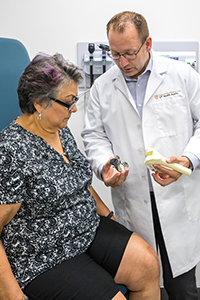
Nurse practitioner Devin Williams shows Yolanda Pacheco knee replacement hardware during her visit to UT Health's Musculoskeletal Institute. The institute, part of Dell Medical School, is helping pioneer a model of value-based care delivery in Austin, Texas.
Photo by Charles Quinn/© CHA
Now retired in Austin, Pacheco relies on the Medical Access Program provided by Central Health, the public organization tasked with providing services for the underserved in Travis County, for her health care needs.
In January 2017, she became a patient of Dr. Karl Koenig at the Musculoskeletal Institute, an academic medical practice that uses team-based models and strategies to provide care focused on an individual's health and personal goals. The institute had been launched just six months earlier by the nascent Dell Medical School at The University of Texas at Austin and community partners. The goal underpinning the institute is an audacious one: to change the way care is delivered to improve the patients' experience and clinical outcomes while driving value. Dell Medical School is rolling out the model rapidly and now employs it in multiple service lines.
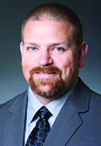
Koenig
Once Pacheco's diabetes was under better control, Koenig, an orthopedist who is the institute's medical director, replaced her left knee in March 2017. The surgery took place at the now defunct University Medical Center at Brackenridge, which had been a Seton Healthcare Family facility. Seton is part of Ascension. Koenig and other staff at the institute are part of UT Health Austin, the clinical practice of Dell Medical School.
That May, Dell Seton Medical Center at the University of Texas, opened a replacement for Brackenridge hospital. The new Level 1 trauma hospital anchors a new health district in downtown Austin and is the primary teaching hospital of the adjacent Dell Medical School. The medical school is new too, having welcomed its first class of 50 students in the summer of 2016.
With the opening of the health care campus, construction continues behind the scenes, as Seton, the medical school and Central Health work together in the Community Care Collaborative to reengineer health care delivery. The Musculoskeletal Institute was the first to pilot an innovative model of care known as integrated practice units, or IPUs — a model being set up by the Community Care Collaborative.
"We want to focus not just on providing health care, but on helping people to get healthier," explains Koenig. The work being done in Austin could one day inform and advance the way care is delivered to uninsured and low-income populations as well as insured patients across the U.S.
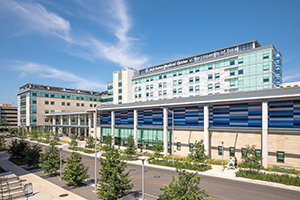
The new health district in downtown Austin, Texas, houses Dell Seton Medical Center at the University of Texas and the Dell Medical School. The academic medical center is shown at left. Two of the three buildings that comprise the Dell Medical School on the campus are in the photo at right.
Photo by Charles Quinn/© CHA
Platinum service
Pacheco is scheduled to have her right knee replaced this fall. (Her surgery has been delayed by other health issues and personal responsibilities.) When she went for her presurgical visit in April, she was impressed by the institute's new offices in the Health Transformation Building on the health campus.
"The whole setup is so awesome; it's built in a U-shape with rooms around it and a meeting spot in the middle. There's no waiting room because you don't wait when you have an appointment. The whole team is congregated and they all seem to know what's going on with you when you arrive," Pacheco says. "I filled out a questionnaire online, saw a nurse practitioner, a social worker, a nutritionist, two medical students who gave me a Fitbit so I could take part in a project, and, of course, Dr. Koenig."
Says Pacheco: "Truthfully, I was dreading another operation, but the institute is making this as easy as they can. I never got this kind of treatment when I was working and had private insurance; you would think they were serving the granddaughter of the president of the United States," she says. "Now I'm riding my stationary bike, and I'm determined to run a marathon by my next birthday!"
Insider's perspective
Koenig has personally experienced the barriers to care that confound the uninsured and medically underserved. He grew up in Concrete, Texas, population 50, halfway between Houston and San Antonio, in a family with four children and no health insurance. "I realized when I got to medical school that we were always one sick child away from financial disaster," he recalls.
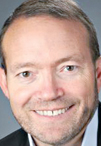
Wallace
After Baylor Medical School and residencies at Stanford and Dartmouth — where he was influenced by the work of Elizabeth Teisberg, co-author with Michael Porter of Redefining Health Care: Creating Value-Based Competition on Results, Koenig returned to Texas to try to reframe the delivery of medical services for the indigent in the United States. He joined the faculty of Dell Medical School where he has been able to collaborate with Teisberg, who, coincidentally, in 2016, also joined the faculty and became Dell Medical School's first executive director of the Value Institute for Health and Care. That institute is the center of much of the clinical, educational and research initiatives being championed by the Community Care Collaborative.
Quality over costs
The academic partnership between Dell Medical School and Seton is set out in a 25-year affiliation agreement signed when Travis County voters passed a property tax referendum to create Central Health and allocate funds for a medical school in Austin in 2012. The partnership has resulted in a long-term, public/private effort to devise new models of care, improve access to care and find long-term solutions to health care challenges.
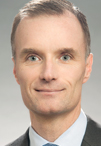
Cordola
"This collaborative effort to rethink the delivery of clinical care based on 'value equation' — quality over cost — is completely in line with our faith-based mission to provide the best clinical services to the most vulnerable," says Ascension Texas Market Executive Craig Cordola.
"We are fortunate to be able to work with a new, forward-thinking partner such as Dell Medical School in reframing health care delivery" across central Texas, he says.
Seton is the largest charitable care provider in Austin, with 11 hospital campuses and more than 100 clinical sites in central Texas, including four hospitals that serve as teaching facilities in the Austin area — Dell Seton Medical Center at the University of Texas, Dell Children's Medical Center of Central Texas, Seton Medical Center Austin and Seton Shoal Creek Hospital (behavioral health). Cordola says, "Our mission has always been to provide services to the underserved, but through the (Community Care Collaborative) model, we have been able to access top-tier thinking in how clinical care should be delivered to the entire population, from the indigent to the company executive."
Integrated practice units
Scott Wallace, co-managing director at the Value Institute, says, "Value-based health care is often misconstrued as reducing costs. We think of it instead as how to use the money we spend to lower demand for care by improving health."
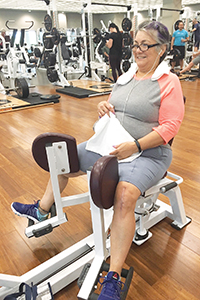
Yolanda Pacheco exercises to build strength in advance of her second knee replacement surgery, which is scheduled for the fall. Pacheco says the team-based model of care being piloted by her surgeon and his colleagues at Dell Medical School's Musculoskeletal Institute has made her feel well cared for and less anxious about the upcoming procedure.
Much of the Value Institute's efforts to date have centered on how to organize health care delivery around patient
experiences rather than physicians' formal training. Central to that thinking is the creation of integrated practice units.
For example, when a patient must manage a chronic condition such as Type 2 diabetes, says Wallace, he or she may need to be under the care of several clinicians — an endocrinologist, a nephrologist, an ophthalmologist, a nutritionist, and so on. Instead of asking that patient to schedule various appointments in various places with all those people, it makes sense to structure care by medical condition, rather than specialty.
"An IPU devoted to diabetes, or COPD, or dementia, or whatever, not only offers the patient a one-stop shop to medical care, but also allows medical teams to communicate, collate and measure outcomes together," says Wallace. "The end result is a way to help restore, or at least manage, someone's health with a comprehensive solution that reduces wait times, improves follow-ups and is usually delivered at a lower cost."
What matters
Among other things, the Value Institute also is studying outcomes that matter most to patients, which are not always the same as what clinicians might assume, says Wallace. (For example, when women are treated for breast cancer, their number one concern beyond survival is not reconstructive surgery but "chemo brain" — how they think and function after treatment.)
The institute also is developing teaching materials in preparation for the launch of a master's degree program in 2019 for medical students interested in transforming health care delivery.
The Value Institute's think-tank approach already has resulted in very tangible results for Austin patients, says Dr. Clay Johnston, dean of Dell Medical School.
"Our faculty, working with Seton leaders, has been focusing on the level of cooperation and willingness needed to deploy resources to get ahead of problems and fulfill our mission of revolutionizing how people get and stay healthy," says Johnston.
Early results
Among the benefits already achieved, he says, are these:
- More community physicians. Between Dell Medical School's creation and Seton's partnership, the number of medical residents providing care in hospitals and clinics has grown from 218 in 2012 to 284 this year. That number is expected to exceed 300 by 2020.
- Improved cancer screenings. Along with its LIVESTRONG Cancer Institutes, Dell Medical School has launched a department of oncology and received $2.3 million to fund colorectal cancer screenings.
- Reduced wait times. For low-income or uninsured patients, wait times for initial appointments dropped from more than a year to less than a month for those suffering from joint problems, such as knee and hip issues. Wait times for women with incontinence or bladder pain issues were reduced by more than a month.
- Redesigned prenatal and postnatal care including built-in follow up appointments and mental health screenings.
- A new initiative on mental and behavioral health through the redesign of the Austin State Hospital campus.
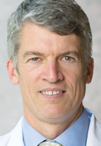
Johnston
Johnston says the medical school is tracking and mining data to identify and eliminate waste and produce better "products" with improved outcomes and lower prices. Some projects in the works include door-to-door assessments of community health and other needs and efforts to address food insecurity. Virtual visits with nurses and social workers together with deployment of home-based technology that allows providers to remotely monitor patients' vital signs, weight and pharmacy compliance will help optimize home-based care.
Johnston says there are a growing number of integrated practice units already operating — including ones focused on neck and back pain, complex gynecological conditions and sports injury. Integrated practice units are in the works for multiple sclerosis, bipolar disorder, gastroesophageal reflux and several types of cancer.
"There are plenty of great medical schools producing great clinicians," Johnston says. "Our goal is to take what we are doing uniquely and fill the gap, focused on systems, creativity and entrepreneurship, to address the changes that need to happen in health care. And we want to provide the best care for everyone — uninsured patients, Medicare patients and privately insured patients."
Copyright © 2018 by the Catholic Health Association
of the United States
For reprint permission, contact Betty Crosby or call (314) 253-3490.